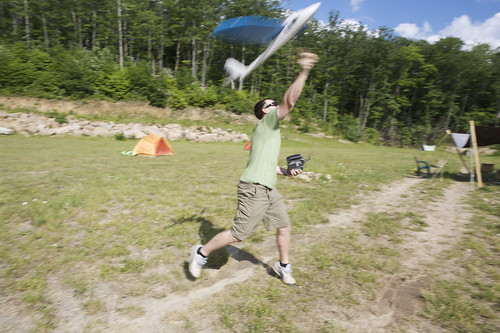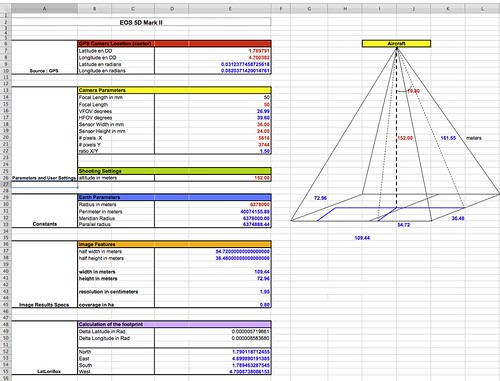
Mapping Curriculum Introduction
As part of the Grassroots Mapping Curriculum series.
Why maps are made
- Anthropological consideration of the power relationships that are involved in mapping.
- Natives to a place don't really need maps because they know where things are.
- Maps are for the inexperienced, they are a way of concretizing and forming knowledge of a place.
- Thus mapping became particularly important in periods of human history associated with the rise of the nation state and colonies. People needed to figure out trade routes, illustrate ownership over places, and coordinate activities at a distance. Grassroots mapping unsettles some of these dynamics by allowing locals to easily produce maps of their areas which can be used to counter official maps.
image: "Félix Nadar", Gaspard-Félix Tournachon
Background and discussion of aerial imaging
- A look at the history and timeline of aerial photography.
- Discussion of different methods from the history of aerial photography to those in use today.
- Excellent historical review and slide show: http://www.papainternational.org/history.html
Principles of aerial imaging
Introduction to aspects of aerial imaging such as GPS, map scale, projections, spatial and image resolution, image sensors, field of view, nadir & zenith, stereoscopy, electromagnetic spectrum, spectroscopy.
Oblique and Vertical Imagery
A discussion of the different characteristics of oblique and vertical imagery. Scale is preserved with vertical mapping while oblique imagery provides a different visual perspective for interpreting information from the scene.
Balloons and Kites: an accessible method to a larger user group
Balloons and Kites are introduced as ground based methods for aerial image data acquisition. The methods are both low cost and accessible to ground based mapmaking. The activities are non-hazardous by design with safety protocols, and significantly less hazardous than alternative methods for imagery acquisition. Persistent monitoring capabilities are discussed. Applications are considered in discussion such as; on-demand mapping, high resolution opportunities, crisis mapping, VGI, and international and political implications to public citizen mapmaking.

Unmanned aerial imaging systems are less accessible to the general public due to required training, higher costs, regulatory situations, and and increased hazard and safety concerns.
Each method is useful in different weather conditions.
Balloon mapmaking
The tethered balloon as an aerial imaging platform. The platform is highly maneuverable, and extensible. The system is not complex, and results can be reproduced through instruction and suitable flying conditions.
Kite aerial photography
The kite method of aerial acquisition has different characteristics than using a balloon. There is no cost of helium, but the activity requires more space and is somewhat less maneuverable.
Planning for mapmaking
What do we know about our area of interest? What maps are available and or what do we intend to map? If mapping for another community or group of people, their input is part of this discussion. Discussing someones personal, historic knowledge of an area and how it has or has not changed over time also contributes to effective map planning.
Site and situation planning for the field mapping
The topography of the target mapping area is considered. The intended spatial resolution and associated image footprint are realized. A vector flight plan is constructed that is purposed to provide full coverage of the area of study.
Spatial Resolution and Image Resolution
In digital imaging, image resolution is the number of pixels in a linear inch, pixels per inch (or PPI), also referred to as dots per inch (DPI). The more pixels, or “dots,” per inch, the higher the image resolution. In a digital map, the spatial resolution is a measurement of the actual real world size of a singular pixel. For example, If a map has a 1m spatial resolution, the smallest distinguishable objects are 1m in size. In this case smaller features such as street lines are indistinguishable.
Image size can be described as the number of pixels on the x/y axis of the image.
Field of view and angle of view
The angle of view of a photo is a proportion of the scene that the sensor is pointing at as an angle. Point and shoot cameras are typically below 50 degrees, while wide angle lenses and fish-eye lenses are up to 180 degrees angle of view.
Field of view (also known as field of vision) is the distance covered of the visible extent by a projection at a given distance.
http://wiki.panotools.org/Field_of_View
Calculating the resolution and Swath size of the Imaging platform
Essentially, the image resolution of an aerial image is determined by the size of the horizontal field of view (HFOV) divided by the number of horizontal pixels in the image. The HFOV is a dynamic value that can be determined for any known camera position. Calculating HFOV will be discussed in detail, include a basic DIY method below.
Discussion of focal length and lens varieties such as rectilinear and fish-eye and how they relate to HFOV.
Activity
Advanced planning for higher precision
Discussion of additional measures for achieving higher precision in calculating the image footprint. In depth discussion of HFOV at epaper press
Lens Equivalence calculation and more tools
Image footprint characteristics for Canon 5D MKII camera imaging at 500’ AGL.
 Comparative Matrix of several popular consumer cameras
Comparative Matrix of several popular consumer cameras
Spatial resolution and image definition
You can have a 30 cm image look “better” or more detailed than a 10 cm one. This is the difference between “spatial resolution” and “image definition”. Spatial resolution says how many cm a pixel represents but image definition is more about quality, it takes into account potential blur (from vibrations...), contrast and luminosity (you want your histogram to cover the whole spectrum, use as many bits as possible)....
Image definition gives the quality of the image, it is what makes you say, “wow that is a good one” before you even find out the spatial resolution.
